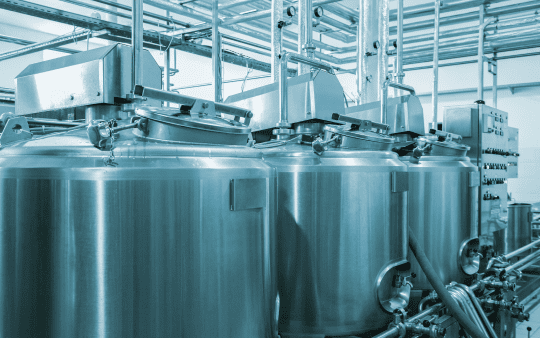
Tank Cleaning Nozzles (Part 1) | 3 Types, Features, and Applications

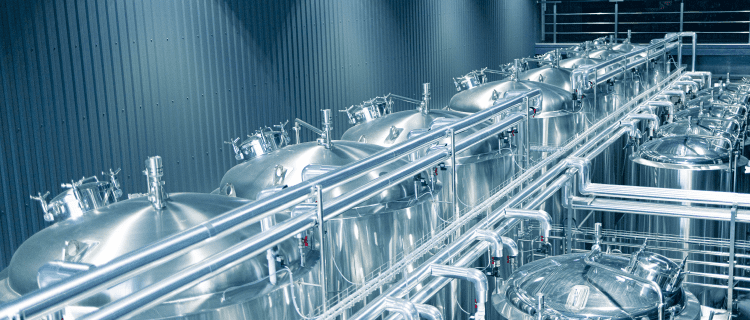
Table of Contents
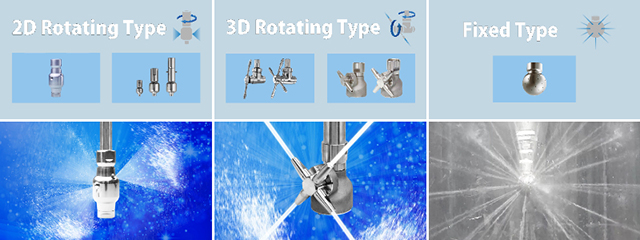
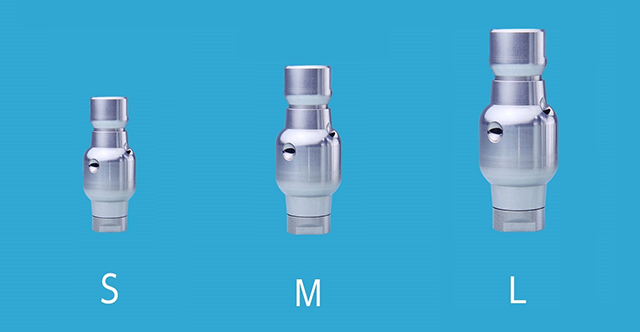
IKEUCHI offers 12 series of tank cleaning nozzles to meet the various needs of customers, such as:
When selecting a series, it is important to take into consideration the water pressure and volume available to supply to the nozzle at the site of use. In other words, the supply water pressure is the operating pressure for the nozzle, and the supply water volume is the flow rate of the nozzle. These two conditions have to be reviewed prior to selecting a series.
The table below lists the features, applications, and ranges of operating pressure and flow rate of each series. Looking at all series, the lowest operating pressure is 0.05 MPa and the highest is 3.0 MPa, while the lowest flow rate is 4.0 L/min and the highest is 803.3 L/min. With both covering such a wide range it is difficult to select the right series with just a glance.
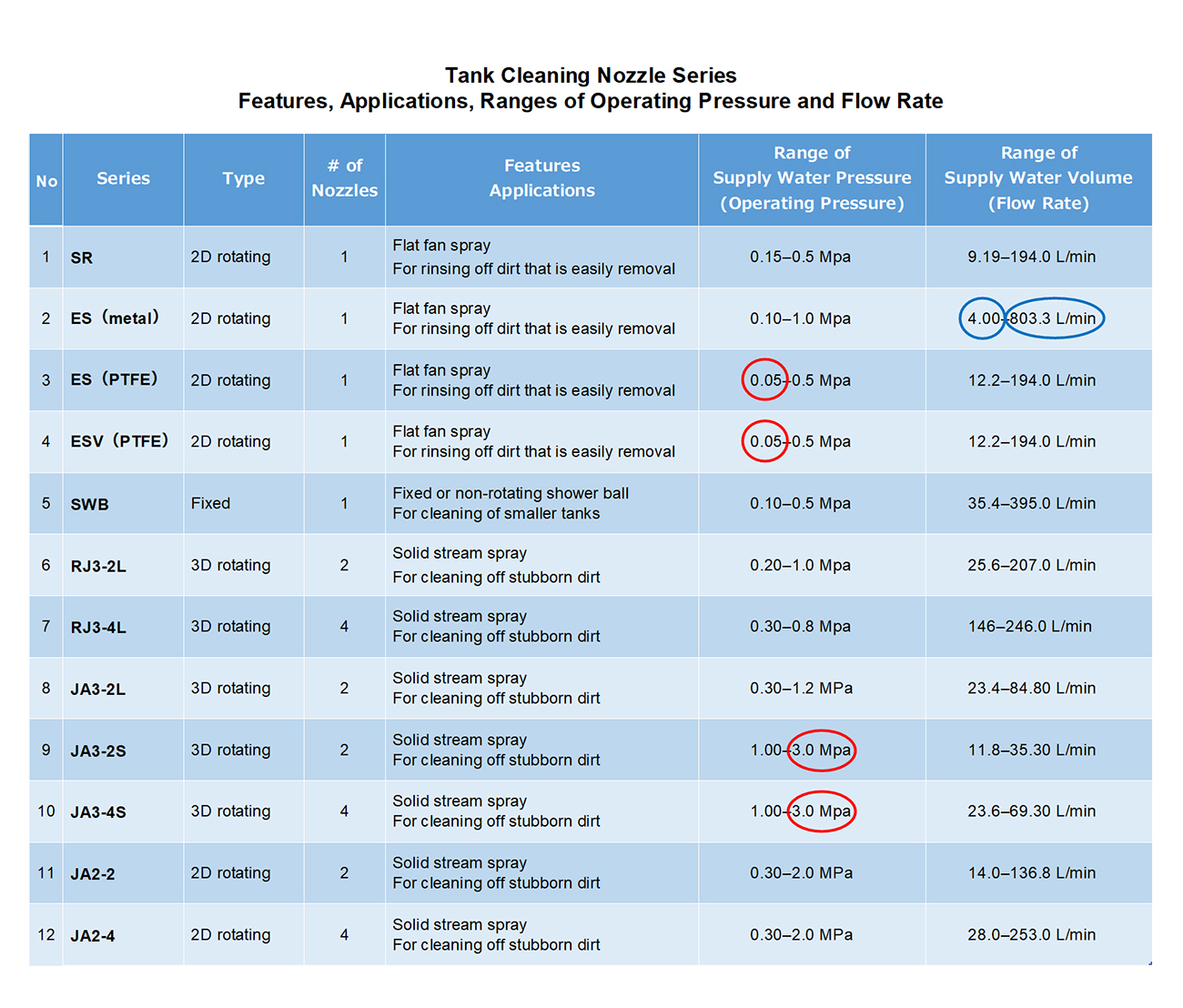
The distribution charts below, which are in the catalog, help visualize the ranges of operating pressure and flow rate for each series
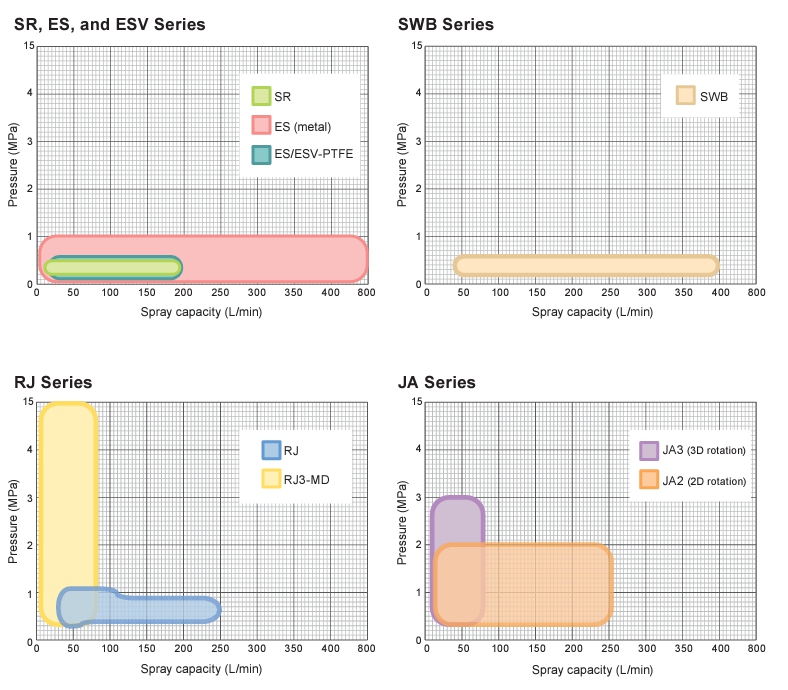
For example, to clean a tank with the least amount of water possible in a facility with a supply water pressure of 0.3 MPa, the SR Series of the 2D rotating type is suitable.
For a more thorough cleaning at the same pressure of 0.3 MPa, the ES Series, made of S316, with a larger flow rate than the SR Series is recommended. For a site with an available water pressure of only 0.2 MPa, the fixed type SWB Series which can spray at lower pressure would be suitable.
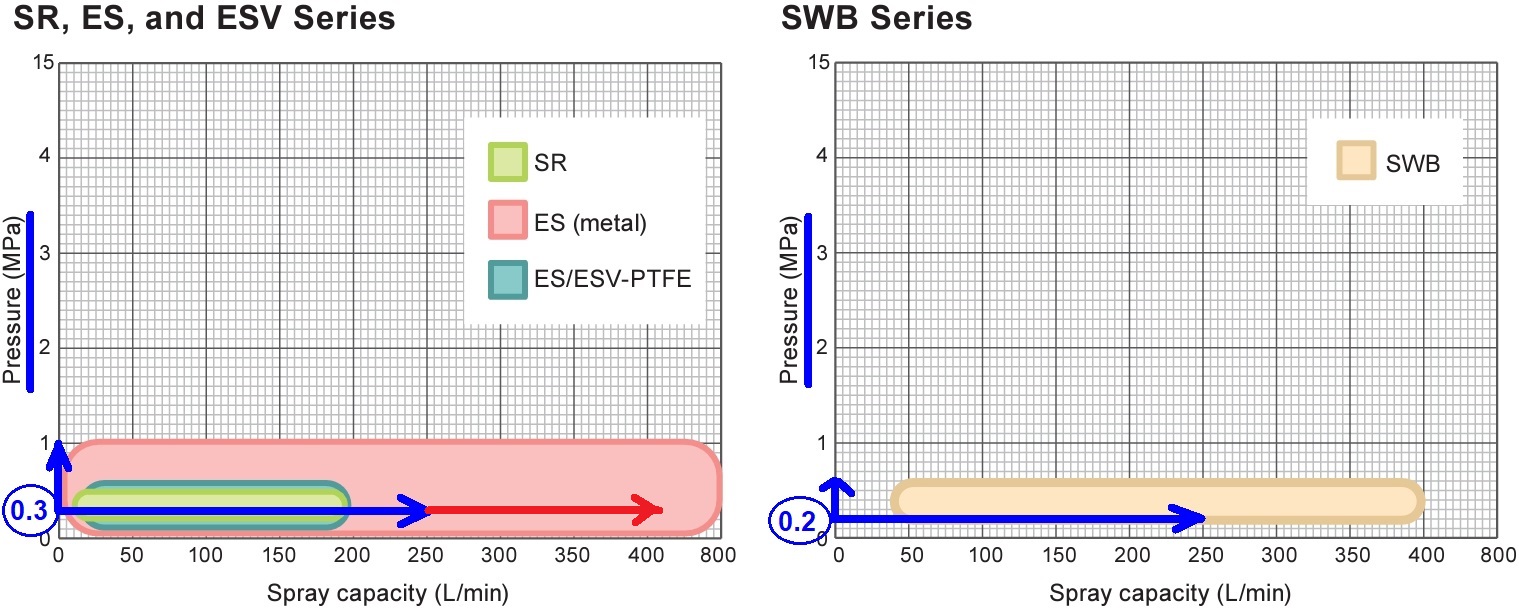
On the other hand, almost all models of the RJ Series and the JA Series, the 3D rotating type, require a minimum operating pressure of 0.3 MPa. The availability of supply water pressure of 0.3 MPa or higher is one of the criteria for selecting a series.
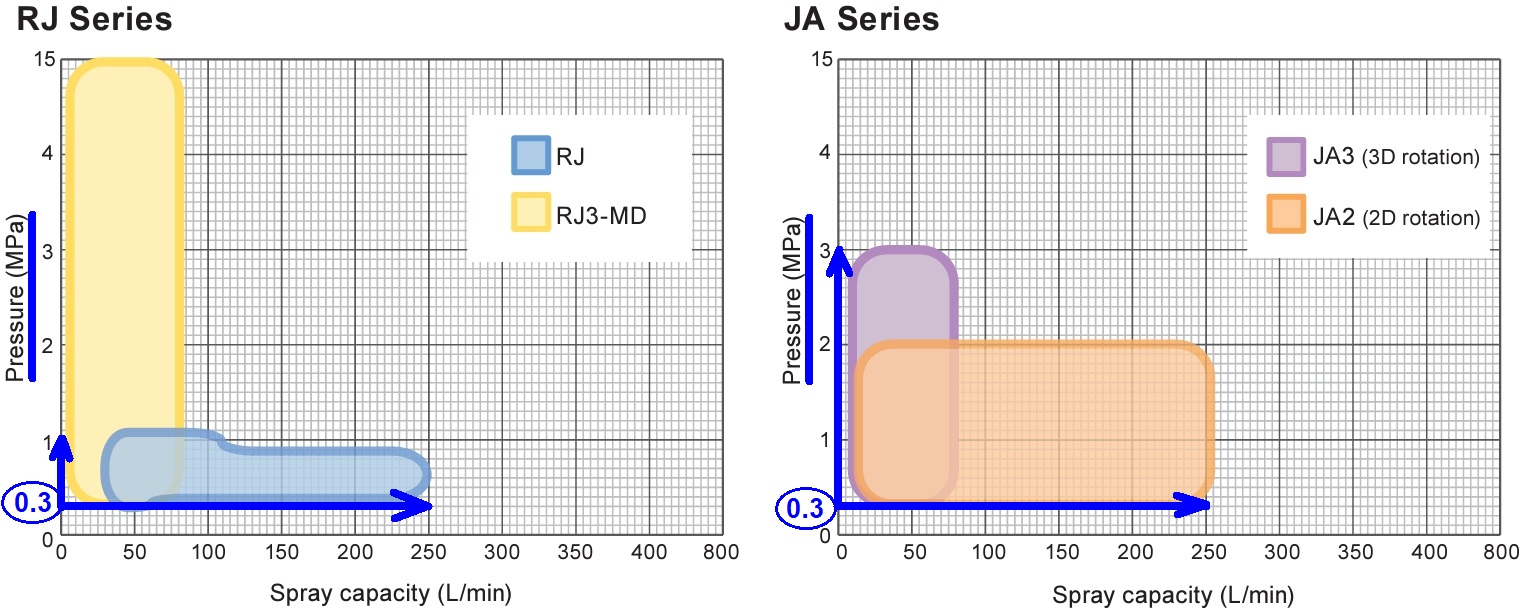
Once the right series is selected based on the water pressure, the right model needs to be selected by checking the flow rate, or required supply water volume, of each model in the chosen series. Refer to the flow-rate diagram below, also shown in the catalog. This diagram shows the flow rate of nozzles under certain operating pressures. For easier comparison multiple models are shown in a single diagram.
For example, the diagrams below show the flow rate for each model of the SR Series at the supply water pressure of 0.3 MPa.
Tracing a straight line from the 0.3-MPa mark on the Y-axis, indicating the water pressure, to the right. Then drawing lines straight down from the intersection of the curves for each model will give the flow rate for those models. That means that 13, 20, 31, 42, 70, and 150 L/min are the minimum supply water volume required for each model respectively.
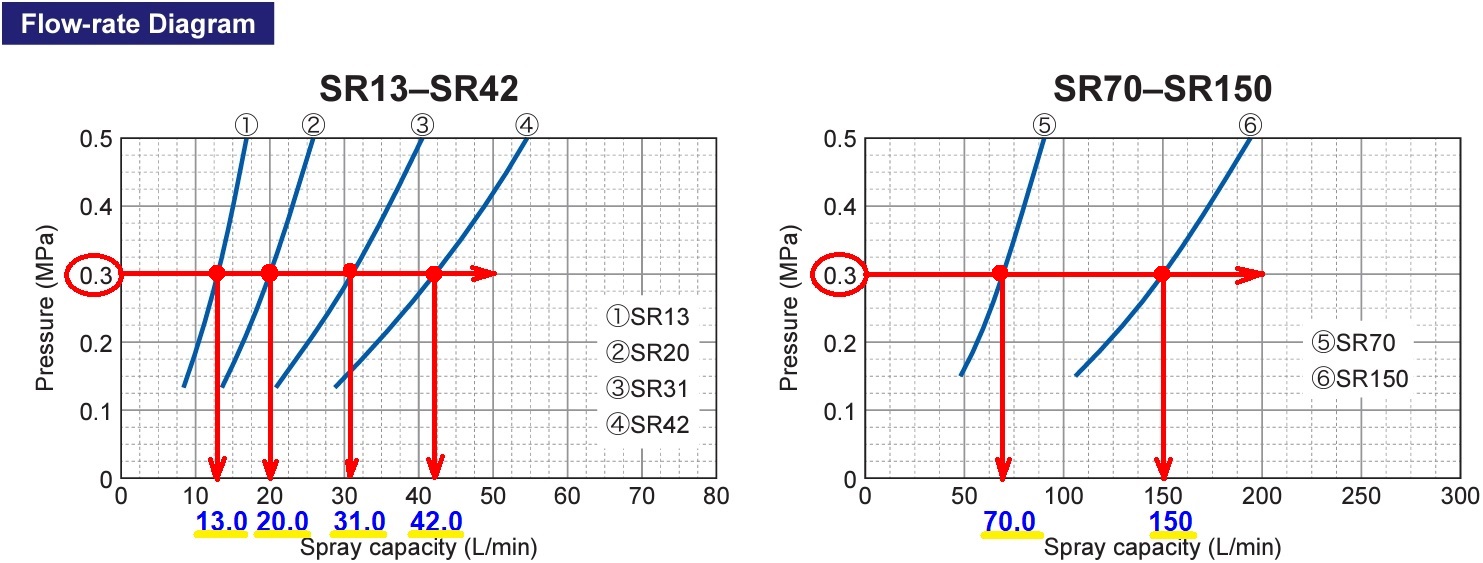
With a maximum supply water volume of 50 liters per minute, model number “SR70” would be unsuitable, as it requires a minimum of 70 liters per minute. The right model in this case would be the “SR42”, one size smaller. If the maximum is 25 liters per minute, the “SR20” should be selected, since the “SR30” has a minimum of 30 liters per minute.
As explained in the previous article “Tank Cleaning Nozzles (Part 2) | Selecting the Right Nozzle Based on Tank Size” the largest diameter of tank that model SR42 can clean at a water pressure of 0.3 MPa, is 3.8 meters. When cleaning a tank with a diameter larger than 3.8 meters, use “SR70” or “SR150” with the larger flow capacity and increase either the supply water pressure or the water volume, or both.
The following is an example of this procedure:
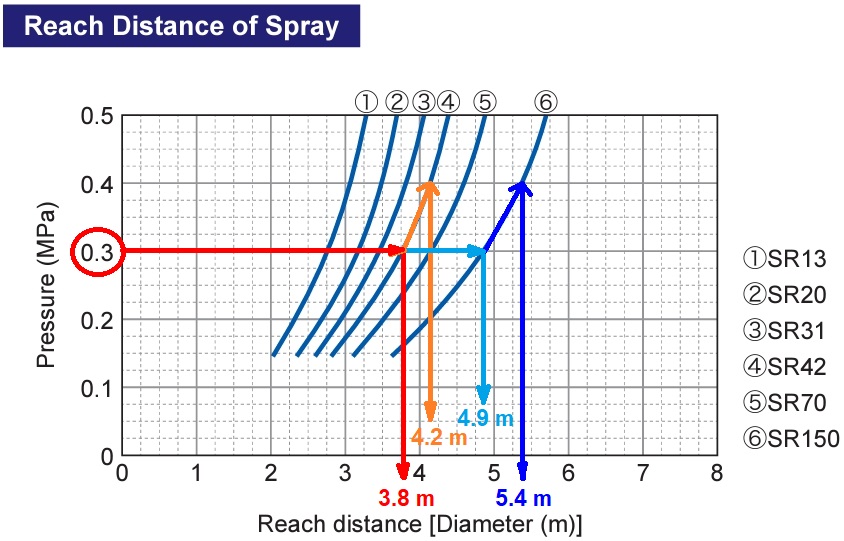
Conversely, when a tank with a diameter of less than 3.8 meters, you can save water by either reducing the water pressure or the supply water volume.
This article has detailed how to select the right tank cleaning nozzle from IKEUCHI based on supply water pressure and volume.
Hopefully this has been helpful. Please feel free to contact IKEUCHI with any questions you might have.
Stay tuned for more articles on tank cleaning nozzles.